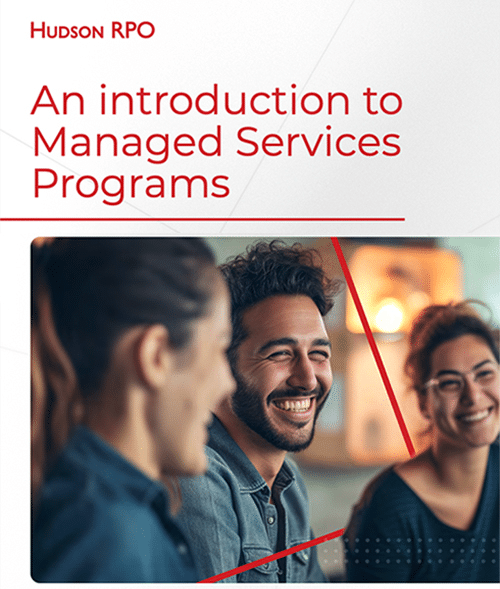- Blogs & Articles
HR Burnout and Tech Gaps: An Internal Talent Emergency
Across industries, HR leaders are confronting a growing crisis within their own ranks. While the headlines focus on skills shortages and workforce transformation, many HR functions are quietly running on fumes. The 2024–2025 HRO Today Annual CHRO Survey found that 41% of senior HR leaders are “extremely” or “very” concerned about fatigue and burnout across their teams, this level of strain has outpaced other operational priorities. In EMEA, that number climbs to 52%, underscoring a global pressure point that cannot be ignored (HRO Today).
The Hidden Cost of Leading Everyone Else’s Transformation
HR’s expanded remit over the past five years, spanning workforce planning, AI integration, change management, and mental health, has created a workload surge that few departments were resourced to handle. According to PeopleSpheres, 91% of HR leaders report their roles have significantly transformed in that time, increasing complexity and eroding work-life balance (PeopleSpheres).
This pressure is compounded by the very issues HR is tasked with solving:
- Workforce stress and disengagement: 74% of employees report negative mental health at work (Monster), which cascades back to HR as a constant firefight.
- Manager capability gaps: Over half of leaders cite concerns about manager effectiveness, with many lacking formal training (Leapsome).
- Tech transitions without guardrails: 35% of CHROs are “extremely” or “very” concerned about implementing HR technology, with EMEA leaders reporting even greater frustration (HRO Today).
When Technology Is Supposed to Help—But Doesn’t
The promise of HR technology is clear: streamline processes, improve analytics, and create better employee experiences. The reality is less straightforward. Usability issues, poor integration with legacy systems, and lack of user training can turn new platforms into stress multipliers rather than stress relievers.
While 65% of HR functions now use AI, up 25 percentage points from last year, most of that adoption remains concentrated in talent acquisition, leaving untapped potential in areas like workforce analytics and employee self-service (McKinsey). Without clear change management strategies, these initiatives risk alienating the very teams they’re meant to support.
Skills Gaps Inside the Function
HR is not just managing organizational skills shortages; it is experiencing its own. Only 41% of CHROs rate their training and development capabilities as strong. Yet internal training is cited as the most important lever for closing skills gaps, chosen twice as often as external hiring (HRO Today). This disconnect leaves HR teams underprepared for the advanced analytics, AI governance, and change management demands of the modern workplace.
Why This Is an Executive Problem—Not Just an HR Problem
Burnout in HR is not a personnel issue; it’s a business risk. Fatigued HR teams are more likely to delay strategic initiatives, make reactive hiring decisions, and miss opportunities to proactively close workforce gaps. In an environment where 59% of leaders are already “extremely” or “very” concerned about the availability of skilled workers, any internal breakdown in talent stewardship has a direct line to operational performance.
Moving from Awareness to Action
Addressing HR burnout and tech frustration requires coordinated leadership from HR, IT, and operations:
- Audit HR workloads to identify low-value tasks that can be automated or redistributed.
- Pair tech rollouts with robust change management, ensuring usability and adoption are tracked as rigorously as cost savings.
- Invest in HR’s own skills development, focusing on analytics literacy, AI fluency, and cross-functional leadership.
- Protect mental health as a strategic asset, embedding it into leadership KPIs and budget priorities. Mental health must be policy not a perk.
The Strategic Imperative for 2025 and Beyond
The organizations that will lead in the next decade understand that the health of the HR function is a direct predictor of overall business resilience. In an era where digital transformation, geopolitical uncertainty, and workforce expectations are converging at unprecedented speed, HR is the operational and cultural engine that keeps talent aligned with strategy. Allowing that engine to overheat risks not only slowing down transformation but also undermining the organization’s ability to compete.
For executive HR, IT, and operations leaders, the path forward demands an intentional shift: prioritizing HR well-being, aligning technology investments with human adoption, and building internal capability at the same pace as external workforce transformation. This isn’t just an HR agenda—it’s an enterprise survival strategy.
Hudson RPO partners with organizations worldwide to strengthen HR capability, close internal skills gaps, and streamline talent operations, so leaders can focus on growth and innovation. Learn more about our approach to building resilient, future-ready HR functions at hudsonrpo.com.

Hudson RPO
Content Team
The Hudson RPO Content Team is made up of experts within the Talent Acquisition industry across the Americas, EMEA and APAC regions. They provide educational and critical business insights in the form of research reports, articles, news, videos, podcasts, and more. The team ensures high-quality content that helps all readers make talent decisions with confidence.
Sign up to receive the latest recruitment insights and Hudson RPO news.





